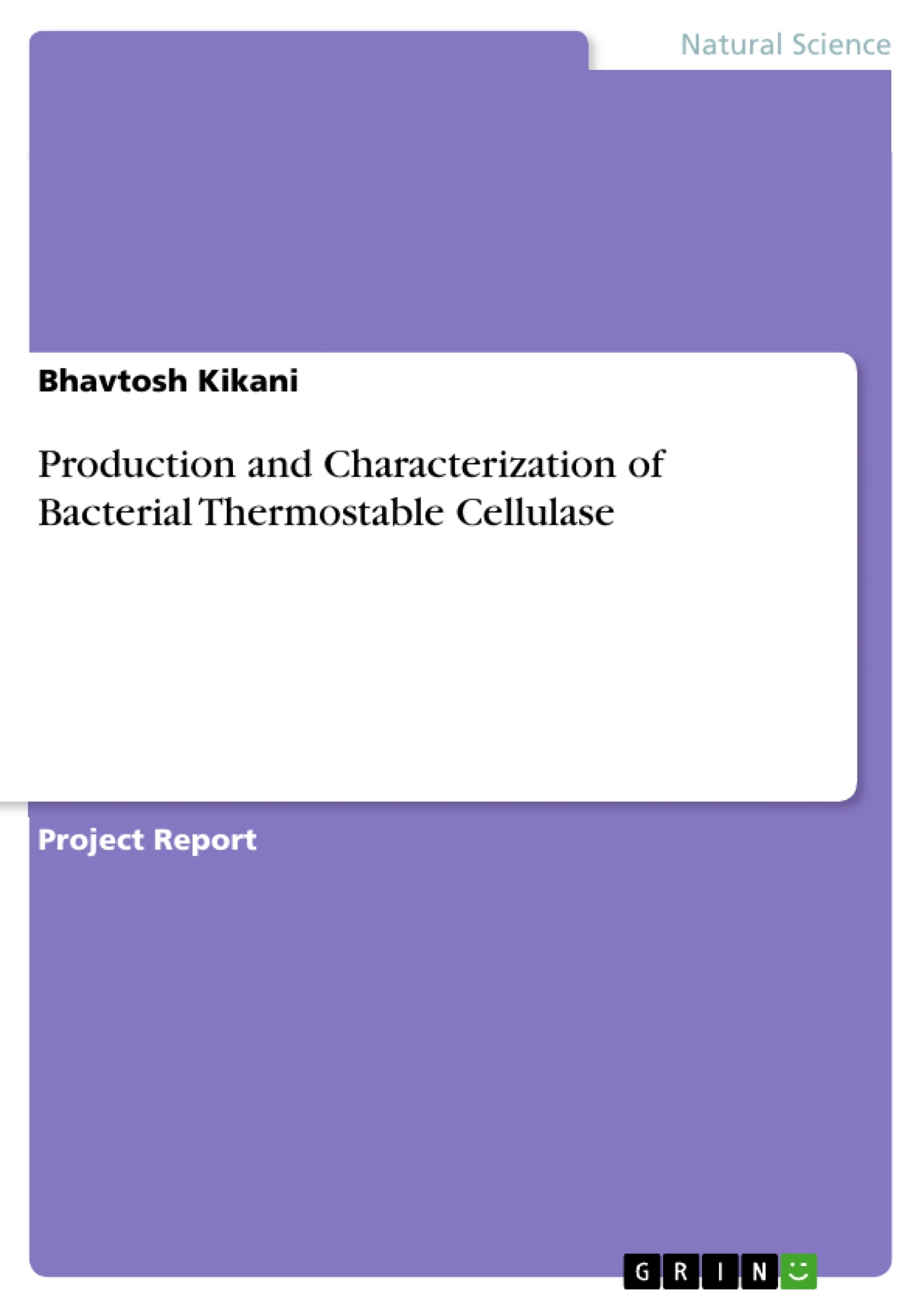Cellulose is one the most abundant carbon sources present on the earth. In the book, the author reported on production optimization and characterization of cellulolytic enzymes by thermophilic bacteria. Various adaptation strategies adapted by thermophilic bacteria are also discussed along with.
The thermophilic bacterial strain produced cellulase in the CMC broth, pH 7 containing 0.5% peptone, 0.5% malt extract, 0.2% ammonium sulphate, 0.2% ammonium nitrate and 0.2% NaCl at 50˚C. Interestingly, the bacteria could not grow at 37˚C, confirming its thermophilic nature. Further, the cellulase was characterized after getting partially purified by ammonium sulphate precipitation method. The partially purified cellulase may be employed to hydrolyze agricultural wastes to produce bioethanol, i.e. biofuels. Thus, the present research may help solve issues of crisis of renewable energy as well as environmental pollution.
Inhaltsverzeichnis (Table of Contents)
- Introduction
- Work flow
- Review of Literature
- Materials and Methods
- Results
- Discussion
- Summary
- References
Zielsetzung und Themenschwerpunkte (Objectives and Key Themes)
This book investigates the isolation, characterization, and optimization of cellulase production from thermophilic bacteria. The study aims to contribute to the development of commercially viable cellulase production methods.
- Isolation and characterization of thermophilic cellulase-producing bacteria
- Optimization of cellulase production conditions
- Partial purification and characterization of the produced cellulase
- Exploration of potential applications of the cellulase in various industries
- Assessment of the economic feasibility of cellulase production
Zusammenfassung der Kapitel (Chapter Summaries)
- Introduction: This chapter provides an overview of the importance of thermophilic bacteria in various industries, particularly for their role in cellulase production. It discusses the significance of cellulose as a renewable bioresource and the applications of cellulases in various fields.
- Work flow: This chapter outlines the research methodology and steps involved in the study, including isolation, characterization, optimization, and purification of cellulase from thermophilic bacteria.
- Review of Literature: This chapter presents a comprehensive review of existing literature on thermophilic bacteria, cellulase production, and their industrial applications. It highlights the current state of research and identifies key gaps in knowledge.
- Materials and Methods: This chapter describes the materials and methods used in the study, including the bacterial strains, culture media, analytical techniques, and experimental protocols.
- Results: This chapter presents the experimental results obtained from the study, including data on bacterial growth, cellulase production, enzyme activity, and purification.
Schlüsselwörter (Keywords)
Thermophilic bacteria, cellulase, enzyme production, optimization, purification, industrial applications, renewable bioresources, economic feasibility.
- Citation du texte
- Bhavtosh Kikani (Auteur), 2018, Production and Characterization of Bacterial Thermostable Cellulase, Munich, GRIN Verlag, https://www.grin.com/document/413980



